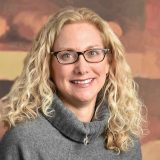The Community Study was launched to deepen our and our agency partners’ understanding of our community’s needs and to shape our respective agendas for the coming decade.
I’d like to thank the Cohen Center for Modern Jewish Studies for partnering with us in this effort. Director Len Saxe and his team brought substantial expertise to bear, implemented new study techniques, which simultaneously reduced cost and enhanced quality, patiently solicited communal input and demonstrated rigor as they thought through complex issues around sampling and weighting and checked findings against benchmarks. They also drove to a deeper level of insight by identifying five behavioral segments that I find highly compelling in thinking through how we might move forward. The result, I believe, is a document that can help shape our communal agenda.
There are certainly findings in the study that speak positively of the level and diversity of Jewish engagement in Boston. I find it compelling that 66 percent of Jewish adults in Boston have traveled to Israel at least once and that 82 percent of Jewish adults feel an emotional connection to Israel. More Boston Jews attended a seder last year (82 percent) than nationally (70 percent, according to the Pew Research Center), and 60 percent attended at least one Jewish program. Coming out of the 2005 strategic plan, our community committed itself to welcoming interfaith families, and indeed this study confirms that those efforts have paid off, with more interfaith families joining synagogues today than in 2005.
Most Jews, even those who are less involved in the community, find significant meaning in Jewish culture. And that culture means different things to different people. The Cohen Center’s behavioral segmentation and their quantification of Israelis, Russians and LGBTQ Jews demonstrate that ours is a complex and interesting community with more than one way to engage.
Yet I think as leaders, we must also confront the fact that our institutions, in the aggregate, may not be meeting the full spectrum of needs of our community. The number of Jews affiliating with the Conservative and Reform movements has shrunk considerably since 2005. Synagogue membership has declined, including for inmarried families with children. Similarly, our institutions may be geographically misaligned—as young Jews marry and have children later, many more remain in the urban core, where there are relatively few Jewish institutions.
Most concerning to me is the fact that less than a third of the “Affiliated” group, which includes high rates of dues-paying synagogue membership, feel connected to the local Jewish community, to Israel or to the worldwide Jewish community. Said differently, members of the group affiliate, yet they don’t feel connected. Similarly, I am concerned that “Minimally Involved” and “Familial” Jews, together representing 41 percent of the community, see little meaning in being Jewish, and few view Judaism as important. That suggests that our community as a whole has failed to communicate a compelling case for the continuity of Jewish values and traditions.
Of course, we need to keep in mind that these data represent averages; we know there are standout synagogues and other institutions that are building vibrant, highly-connected communities. What can we learn from standouts that seem to be touching a chord?
There is an opportunity here to set a new bar for ourselves and our institutions. For example, should we aim for every Jew to be able to find a Jewish community in which they feel deeply connected and a part of? What would that need to look like? What is required to have all Jews experience greater meaning and a sense of community, and feel, deeply, the importance of passing on their Jewish heritage as a treasured heirloom to the next generation?
There is much opportunity to dig deeper into subpopulations in this data—and perhaps with follow-up surveys—such as families with young children, young adults, Israelis and interfaith families to better understand and respond to their needs and attitudes. What are the barriers today? What are the gaps? What are the success stories?
And as a board member at CJP, the Rashi School and the Union for Reform Judaism, I find myself asking how can we do a better job of outreach to engage a broader swath of the population? Of touching individuals meaningfully in a manner that resonates for them? As co-chair of CJP’s current strategic planning effort, together with Jon Sandler and Shira Goodman, I can attest that we’re wrestling with these questions, especially around engagement of millennials. How does this survey suggest our community agenda should evolve? What role should CJP play in the effort?
Wrestle with us so we can move forward faster together.
Read the 2015 Greater Boston Jewish Community Study here.
This post has been contributed by a third party. The opinions, facts and any media content are presented solely by the author, and JewishBoston assumes no responsibility for them. Want to add your voice to the conversation? Publish your own post here. MORE



